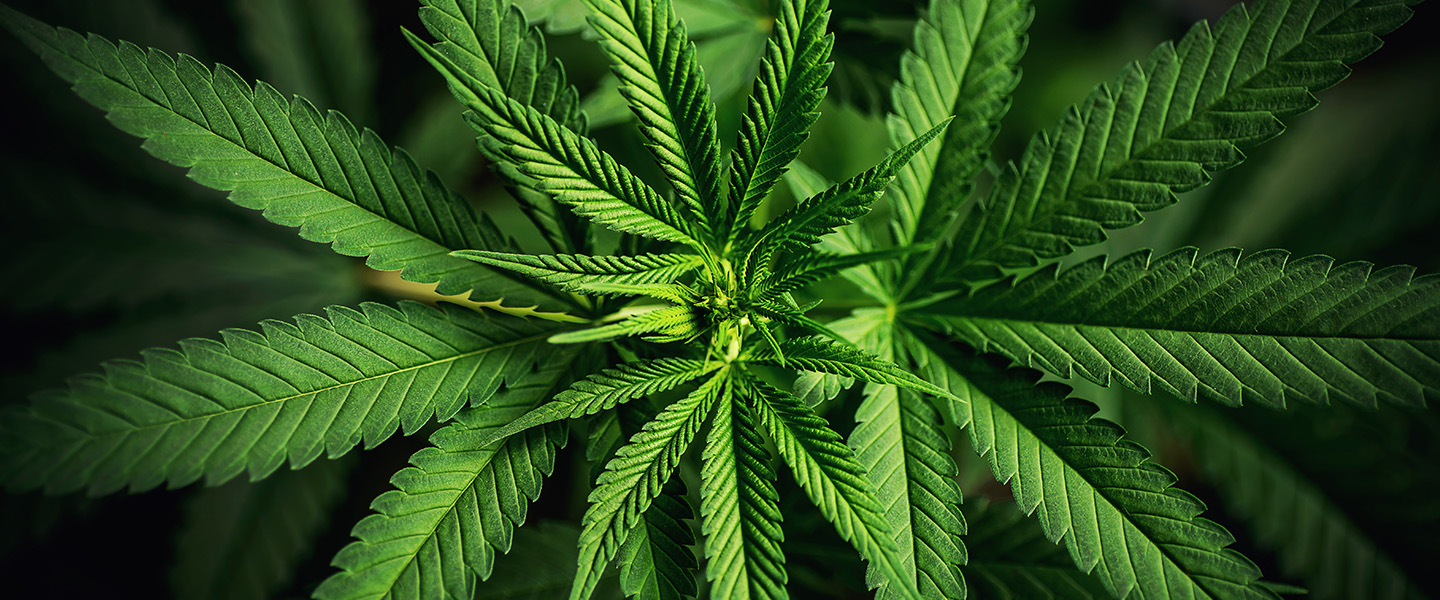Cannabis Use in Adolescence May Alter Development of Cerebral Cortex
Cannabis Use in Adolescence May Alter Development of Cerebral Cortex

More than a third of 12th graders report having used marijuana, also called cannabis. And 78 percent of first-time marijuana users are between the ages of 12 and 20 years. Concerningly, cannabis use during adolescence has been linked in some studies to long-term detrimental effects on impulse control and executive functioning, such as planning and decision-making. Cannabis-related brain changes are not well studied, but new research mapping such changes in 799 adolescents suggests how cannabis use in middle to late adolescence may alter development of the brain’s cerebral cortex.
A team led by 2020 BBRF Young Investigator Matthew Albaugh, Ph.D., of the University of Vermont, conducted a large longitudinal brain imaging study (following the same individuals over a period of time) of adolescent cannabis use. They used magnetic resonance imaging (MRI) brain scans from 14-year-olds in Europe who reported having never used cannabis, and did follow-up scans 5 years later, when the participants were about 19 years old. Their data showed significant brain changes in those who reported using cannabis in the interval between the scans compared to those who said they did not. The findings were reported in JAMA Psychiatry.
In the brain, a signaling system called the endocannabinoid system contributes to the regulation of stress response, anxiety, memory, pain, and motivated behavior. Additionally, endocannabinoid signaling plays a key role in the development, maturation, and sculpting of neural circuits, processes that continue through adolescence. The system includes a number of molecules, including anandamide and 2-AG (2-arachidonoylglycerol), which activate two cannabinoid receptors in the brain, called type 1 (CB1) and type 2 (CB2).
Cannabis engages with the endocannabinoid system: THC, the main psychoactive component, binds tightly to the CB1 receptor. This interaction activates the endocannabinoid system, and may be detrimental during adolescence, when the system is still developing.
“The potential association of cannabis use with adolescent development represents an increasingly relevant public health issue, particularly given evidence of increased problematic cannabis use among adolescents in areas where recreational cannabis use has been legalized,” the team noted in their paper.
Comparing MRI scans at baseline, when participants were 14, and 5 years later, the team found a negative correlation between self-reported cannabis use and prefrontal cortex thickness. The prefrontal cortex is involved in executive functioning and is one of the last parts of the brain to mature—it may not be fully developed until around age 25. This part of the brain normally thins with age, but the study found that on average, cannabis-related thinning was greater in cortical regions that normally show the most significant age-related thinning.
Additionally, the data indicated that teens who used more cannabis had thinner prefrontal cortices than those who used less, indicating that the brain changes are dose-dependent. The team found no association between baseline prefrontal cortex thickness and cannabis use at the 5-year follow-up, suggesting that preexisting anatomical differences did not predict who would later use cannabis.
To find out whether the brain regions with accelerated thinning were associated with the location of CB1 receptors, the team used data from positron emission tomography (PET) scans, which can map CB1 receptors in the brain. This data came from a separate group of young men because, the team pointed out, PET is an invasive test and not ethical to perform on minors. They confirmed that the pattern of cannabis-related thinning was particularly associated with brain areas containing large numbers of CB1 receptors.
To determine whether the prefrontal cortex changes were associated with behavior changes at the 5-year follow-up, they tested three aspects of impulsiveness: attentional, non-planning, and motor. Thinning in the prefrontal cortex was significantly associated with more attentional impulsiveness at the 5-year follow-up, controlling for sex, baseline age, baseline brain volume, baseline pubertal development, verbal IQ, and performance IQ. Other cognitive measures did not change with cannabis use.
In rats, past research has shown that THC exposure disrupts normal brain development by inducing premature pruning of the synaptic connections between nerve cells and degeneration of the complex branching structure of nerve cells in early adulthood. Dr. Albaugh and colleagues hypothesize that the cannabis-related thinning shown in their study may be due to a similar mechanism. However, more research is needed to determine the exact mechanisms by which cannabis leads to the observed changes in the prefrontal cortex of teens.
It remains to be determined how much cannabis use is problematic for adolescents, and whether the observed changes are linked to long-term psychological or cognitive effects. But overall, “the findings underscore the importance of further longitudinal studies of adolescent cannabis use, particularly given increasing trends in the legalization of recreational cannabis use,” the team concludes.
The team also included: Deepak D'Souza, M.D., 2013 BBRF Young Investigator; Henrik Walter, Ph.D., M.D., 2017 BBRF Distinguished Investigator; Robert Whelan, Ph.D., 2015 BBRF Young Investigator; and Alexandra Potter, Ph.D., 2009 BBRF Young Investigator.



